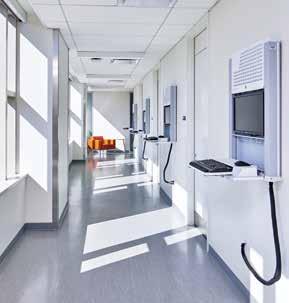
5 minute read
A New Approach to Health Sciences Education
A NEW APPROACH TO HEALTH
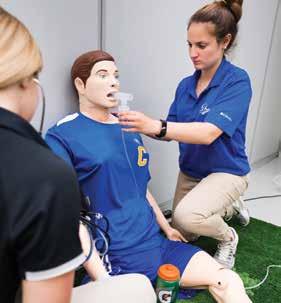




Healthcare simulation is a teaching, assessment and research modality that places learners in a real-to-life patient encounter that allows them to hone clinical care before actual live patient care. The beauty of healthcare simulation is that it offers a safe environment for learners to make clinical decisions without placing patients at risk. Simulated activities standardize learning because faculty have more control over the design of the patient case and important trends related to safer delivery of care. The third leading cause of death is healthcare error, with miscommunication attributing for 80 percent of the situations. The principle of practicing in a simulated patient care delivery environment is a paramount mechanism for addressing this disturbing statistic.
Our simulated environments mimic the places our students will eventually care for patients. The spaces allow for ample exposure for acute care, outpatient and home care settings. They include T he newly formed School of Health and Medical Sciences (SHMS) Clinical Simulation Department just celebrated its first anniversary as part of the opportunities available from moving to the Interprofessional Health Sciences (IHS) Campus in Nutley. This is an exciting time at the IHS Campus, where our programs are expanding their use of healthcare simulation activities to better prepare graduates to meet and exceed the needs of their patients. By using simulation, we are offering deeper experiential learning opportunities that are now available with access to the state-of-the-art building, learning spaces and technology. This access has vastly modified the way the SHMS programs are preparing their learners and evaluating competency milestones. actual equipment and furniture for realism, allowing participants to complete assessments, make clinical decisions and complete clinical skills in real time. This real-time decision making allows the experience to include predictable patient outcomes. Our simulation program has an entire manikin family to depict patient life span beginning with a newborn to geriatric ages. Manikins have simulated pulses, lung sounds, heart sounds, bowel sounds, ultrasound capabilities, clinical procedure skill ability, and some neurologic functionality. For enhanced realism and deeper sharpening of effective patient communication skills, our program utilizes Standardized Patients (SPs). Standardized Patients are actors who have been educated on healthcare education objectives, feedback and debriefing techniques. After a faculty member designs a patient case, the SP learns the case information and presents it to the learners. This is paramount Our Skills Labs, Standardized Patient Center and Clinical Simulation and Learning Center allow students to enhance their skill sets.
SCIENCES EDUCATION
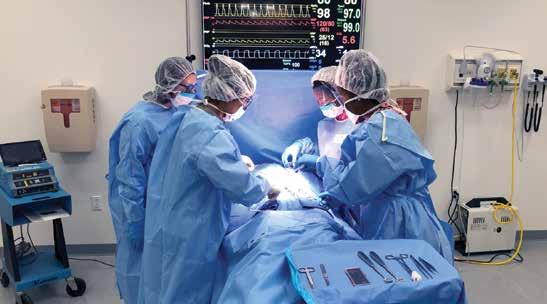
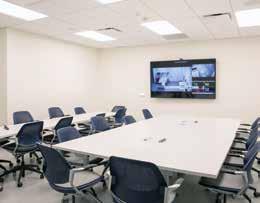
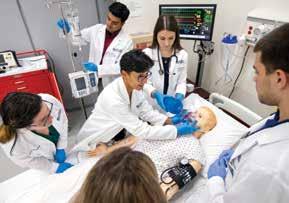
for improving clinician confidence, enhanced communication skills and improved navigation of a patient care encounter. This experiential learning model further helps to prepare learners for actual patient care clinical rotations and future care delivery since they have experience without placing patients at risk.
Our simulated activities are designed by collaboration with the simulation team members and faculty from the program to ensure that best practices from the profession are infused with current healthcare simulation standards. SHMS has adopted a universal standardized rubric for assessment and debriefing techniques, which we believe helps prepare learners from multiple disciplines to interact and learn collaboratively. During the inaugural year, the simulation team designed and facilitated 58 activities, clocking over 290 hours of simulation and engaging learners from every SHMS health science program. The debriefing and learner self-reflection phase of the simulation is important to capture the various lessons learned during the simulation activity. By engaging with various professionals from Counseling Services and Campus Ministry, as well as a Catholic Bioethics expert, we have enhanced our debriefing capabilities. Simulations that have a medical-ethics learning focus, patient spirituality aspect and/or activities that are known to evoke strong emotional responses from learners are better met through this approach to promote patient and provider safety. This often-overlooked opportunity of collaborative support is fundamental for optimal learning. Our goal is to offer activities that engage learners experientially with opportunities to respond to known complexities of healthcare delivery.
So, what’s next? Our team is busy designing future simulations that will continue to address emerging trends within each profession and bring more interprofessional learning opportunities to students at the IHS Campus. Our team awaits opportunities that will positively impact patient care preparation. ■ – Jennifer McCarthy, MAS, NRP, CHSE Director of Clinical Simulation and Clinical Associate Professor
HOW SIMULATION IS HELPING US SHAPE BETTER-PREPARED GRADUATES
■ Athletic Training program simulated spaces were modified from hospital care by using turf to allow learners to handle emergencies often experienced in a high school and collegiate setting. The learners applied techniques to handle common medical, therapeutic patient intervention and exercise while focusing on effective communication techniques and experiential patient perspective.
■ Master of Healthcare Administration program simulation took on a different approach than clinical medicine, by offering administrative activities for learners. Some examples were utilizing de-escalation techniques with patients and families, slip-and-fall incidents and a full hospital IT infrastructure failure response.
■ Occupational Therapy program utilized simulation for enhanced acute care orientation, experiential patient perspective and occupational profile assessment.
■ Physician Assistant program simulation activities were used to enhance patient interviewing techniques, history taking, patient assessment accuracy, differential diagnosis consideration, emergency care situations, difficult patient conversations including disclosing of clinical error, experiential patient perspective and enhanced acute care setting orientation.
■ Physical Therapy program simulated activities offered enhanced acute care setting orientation, experiential patient perspective, integumentary assessment, mobility techniques post-surgery, outpatient treatment modalities, exercise physiology and improved patient education.
■ Speech-Language Pathology program simulation allowed for enhanced acute care orientation, swallowing assessment techniques, experiential patient perspective, newborn readiness assessment and chronic illness speech assessment in the acute care setting. ■










